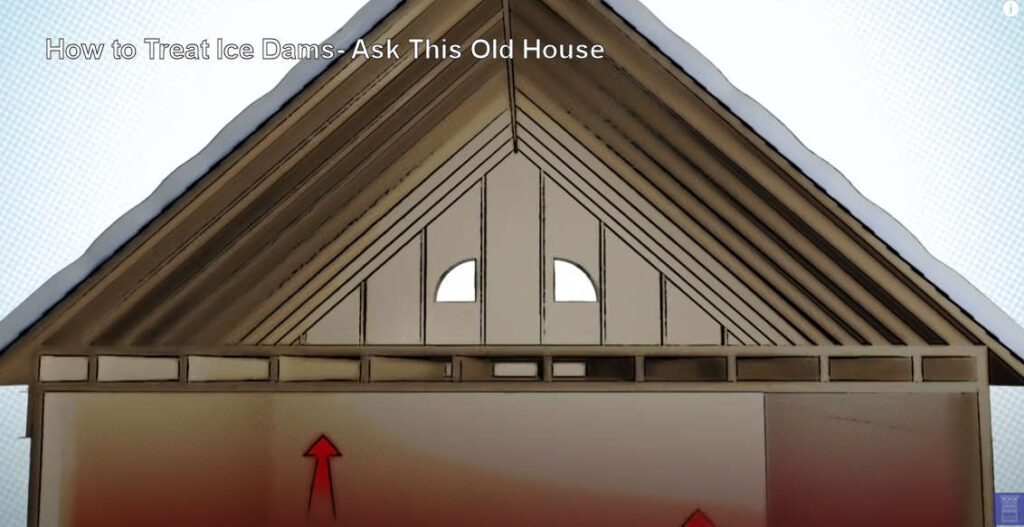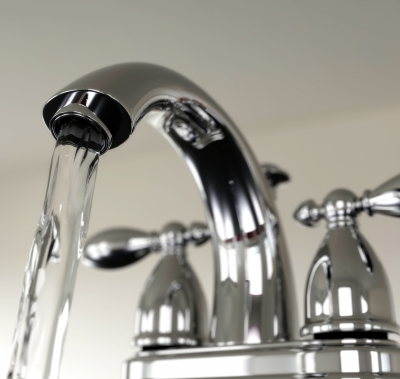Everyone worries about water damage during those sudden heavy downpours that occur in the springtime. While you might have already taken steps to prevent water runoff into your basement or the first floor of your home, there are other times when you need to worry about water damage. The winter season is filled with potential issues that can contribute to winter water damage.
Slow Snow Melt Leads to Roof Leaks
Those cozy snowy days may make it feel like time stands still, but the snow begins to melt once the sun emerges. However, the melting process may not happen fast enough for all of the moisture to evaporate before it causes damage. Slowly melting snow is often one of the biggest causes of roof leaks. As the water sits beneath the snow on top, it has more time to spread and slowly drip into your house. If an ICE DAM forms due to snowmelt, it can cause water to back up and actually flow up and under shingles. The following video from “This Old House” explains dealing with ice dams.
Pipes Can Burst in Freezing Weather
In areas known for freezing temps, plumbing lines are frequently prepared to withstand frigid temps. You can do your part by covering up faucets and wrapping exposed pipes, but you could still deal with a burst line if the temperatures dip too low for too long. A burst pipe can spill thousands of gallons of water out into your home or business within minutes. Shutting off the water is your first step. Then, you’ll need to arrange for water damage cleanup before the moisture has a chance to rot the building materials or lead to mold. Finding a professional to assist you is advisable as you will need access to the right tools and supplies to prevent irreparable damage.
Windows and Doors Accidentally Get Left Open
Winter water damage can occur when the temperatures fluctuate. Opening the window on a warm day is a great way to enjoy the fresh air. The problem occurs when you forget to shut it before a major snowstorm. In the winter, freezing precipitation can sometimes happen with minimal warning, which means you could even be away from the house when the snow hits.
Another problem is if the windows are closed but not latched or locked. If your window isn’t sealed, it could be open 1/4 inch, and you’d never notice it. This not only creates a space for backed-up snow to push water inside, but it can also be a great source of heat loss. So always latch your windows closed to prevent water infiltration and heatloss.
High Snowfall Amounts Seep Inside
Most of the time, you shouldn’t have to worry too much about the snow getting inside if your property is properly sealed. Yet, blustering winds and blizzard-like conditions can lead to issues such as the snow stacking up against a door that can get inside a poor seal. You could also accidentally let the snow inside when you open the door to exit the building.
Snowy and freezing weather can often present more hazards than a summer storm for generating water damage. Make sure to winterize your property properly, and remember that removing water as soon as possible can prevent you from experiencing the worst-case scenarios. With proper prevention and cleanup methods, you can keep your property dry and comfortable throughout the winter months.
You might also like:
- Upgrade Your Windows and Save on Energy
- Appliances That Bump Up Your Electricity Bill
- How Air Conditioner Prep In Fall Can Save Money in the Future
- Home Maintenance: How To Save Money This Winter
- Should You Buy A Home With Cracks In The Foundation?
- Home Upgrades to Save Money Every Day
- Regular Maintenance Will Save You Money
- Money-Saving Upgrades: 3 Home Investments to Help Your Wallet




